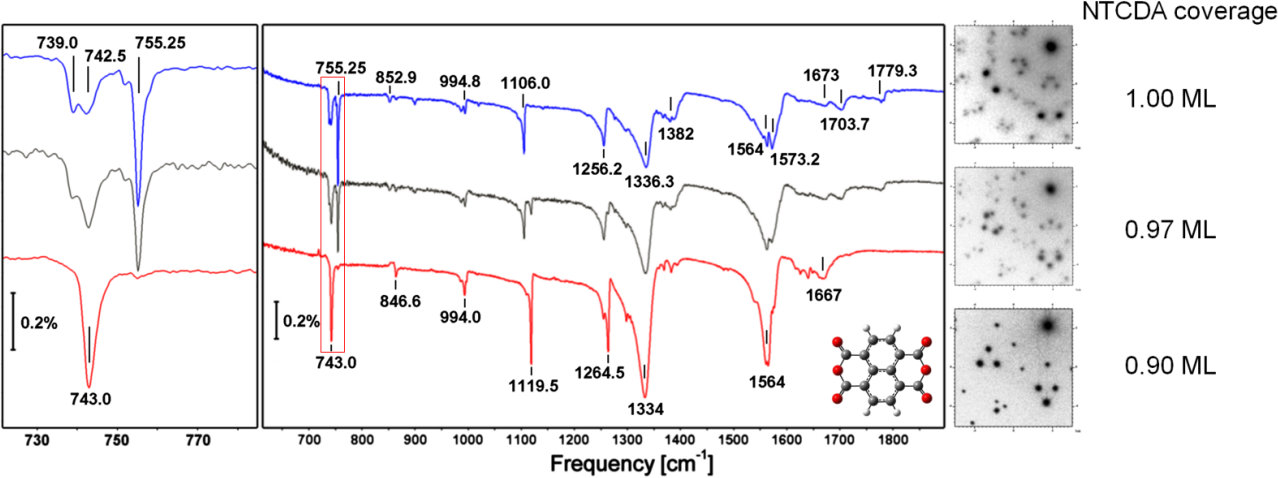




Invited talk
Infrared-spectroscopy applied to ultrathin molecular films
Physics Department, Philipps-University Marburg, Germany
IR-spectroscopy is commonly referred to as a fingerprint technique to identify molecular species. However, this method can do better! The high spectral resolution and polarization dependence of vibrational modes allows to distinguish between different local environments (→lateral interactions), bonding configurations (→adsorption site and orientation), and phases (monolayer, bilayer, bulk) of large organic molecules with high selectivity. Thereby IR spectroscopy is non-invasive/destructive, obeys strict selection rules, and provides adequate sensitivity to detect even slight differential changes within grown films. Selected examples of various effects and phenomena associated with ultra-thin molecular layers will be presented, demonstrating the excellent quality and potential of infrared spectroscopy in studying such systems. Substantially reduced oscillator strengths (as compared to the popular diatomic adsorbate species studied in the past), in conjunction with more demanding preparation procedures, however, set limits to the widespread use of IRAS to investigate monolayer films and interfaces of large molecular species. Interestingly, for molecular species characterized by a partially filled orbital, e.g. the former LUMO, IR spectra are influenced by interfacial dynamical charge transfer (IDCT) between molecule and metal substrate [1]. By means of line-shape analysis of the associated Fano-type absorption profiles the electron dynamics (electron transfer time) between the molecule and the metal substrate can be estimated [2].

Figure 1: Infrared absorption spectra of typical molecular (mono)layers, the relaxed (bottom) and the compressed (top) NTCDA/Ag(111) phases. On the left, the section of a characteristic out-of-plane vibrational mode has been enlarged; the splitting is due to inequivalent molecules within the overlayer unit cell. On the right, the respective SPA-LEED images are depicted. All spectra have been obtained at Tsample = 20K using an instrumental resolution of 1 cm-1. The unusually strong in-plane vibrations (at frequencies above 900 cm-1) are the result of vibrationally induced interfacial dynamical charge transfer between molecule and metal substrate. Asymmetric line shapes arise due to the non-adiabaticity of the electron-vibron coupling.
[1] F. S. Tautz, Progress in Surface Science 82, 479-520 (2007)
[2] D. C. Langreth, Phys. Rev. Lett. 54, 126-129 (1985)
[3] C. R. Braatz et al., J. Chem. Phys. 136, 134706 (2012)